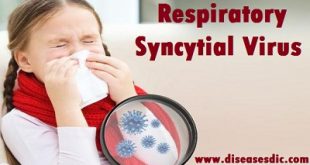Definition
Bronchiolitis is a type of chest infection that commonly affects children under 12 months of age. It occurs when the very small airways in the lungs, called the bronchioles, become inflamed and swell up.
The bronchioles are the smallest air passages within the lungs. When they are compromised, usually by a virus, these air passages become swollen and are filled with mucus. The inflammation can be enough to cause partial or complete blockages of the airways. In children especially, this can lead to wheezing, a high-pitched noise that can be heard when the child is breathing out. Although it is not always the case, airways that are seriously blocked can lead to lower levels of oxygen within the blood.
This condition is a common illness among infants and children. In fact, it is the most frequent cause of hospitalization for patients in this age group. This is a seasonal illness that generally peaks during the winter months, although it can occur at other times during the year.
Epidemiology
Approximately 75% of cases of bronchiolitis occur in children under the age of 1 and 95% in those under the age of 2. Although children can usually be managed at home, approximately 3% of affected children require hospital admission, with 1.3 per 1000 infants aged less than 1 year requiring paediatric intensive care input. The condition most commonly occurs during the winter months.
Types of Bronchiolitis
There are two main types of bronchiolitis:
Viral Bronchiolitis
Viral bronchiolitis appears in infants. Most cases of viral bronchiolitis are due to respiratory syncytial virus (RSV). Viral outbreaks occur every winter and affect children under the age of one.
Bronchiolitis Obliterans
Bronchiolitis obliterans is a rare and dangerous condition seen in adults. This disease causes scarring in the bronchioles. This blocks the air passages creating an airway obstruction that can’t be reversed.
Risk factors
Bronchiolitis typically affects children under the age of 2 years. Infants younger than 3 months of age are at greatest risk of getting bronchiolitis because their lungs and immune systems aren’t yet fully developed.
Other factors that are linked with an increased risk of bronchiolitis in infants and with more-severe cases include:
- Premature birth
- Underlying heart or lung condition
- Depressed immune system
- Exposure to tobacco smoke
- Never having been breast-fed (breast-fed babies receive immune benefits from the mother)
- Contact with multiple children, such as in a child care setting
- Spending time in crowded environments
- Having siblings who attend school or get child care services and bring home the infection
Causes of Bronchiolitis
The most common cause of bronchiolitis is a virus. At first, the virus causes an infection in the upper respiratory tract. This includes the nose, mouth, and throat. It then spreads downward into the windpipe (trachea) and lungs (lower respiratory tract). The virus causes inflammation and even death of the cells inside the respiratory tract. This blocks airflow in and out of the child’s lungs.
Bronchiolitis is most often caused by the respiratory syncytial virus (RSV). But these other viruses can also cause it:
- Rhinovirus
- Parainfluenza virus
- Adenovirus
- Influenza
- Human metapneumo virus
In rare cases, bronchiolitis may be caused by bacteria.
Bronchiolitis symptoms
The early symptoms of bronchiolitis are similar to those of a common cold. The first symptom is usually a blocked or runny nose and your child may also have a slight cough or fever (high temperature). A normal temperature is 36C-36.8C (96.8F-98.2F).
Bronchiolitis begins as a mild upper respiratory infection. Within 2 to 3 days, the child develops more breathing problems, including wheezing and a cough.
Symptoms include:
- Wheezing is the main symptom that helps with diagnosis. Wheezing is a high-pitched purring or whistling sound.
- You can hear it best when your child is breathing out.
- Rapid breathing at a rate of over 40 breaths per minute.
- Tight breathing (having to work hard to push air out).
- Coughing (may cough up very sticky mucus).
- Fever and a runny nose often start before the breathing problems.
- The average age for getting bronchiolitis is 6 months (range: birth to 2 years).
- Symptoms are like asthma.
- About 30% of children with bronchiolitis later do develop asthma. This is more likely if they have close family members with asthma. Also likely if they have bronchiolitis more than 2 times.
Complications
These complications can occur following bronchiolitis:
- Hypoxia
- Dehydration
- Fatigue
- Respiratory failure
- Persistent cough or wheeze (very common and parents should be counselled that their child may cough for several weeks)
- Bronchiolitis obliterans – Airways become permanently damaged due to inflammation and fibrosis
Diagnosis and test
Doctors usually diagnose bronchiolitis solely through physical examination and taking the history of your child, but they may order additional tests to rule out other diseases, such as pneumonia or asthma. To confirm the diagnosis, the doctor may also order:
- Chest x-rays- A diagnostic test which uses invisible electromagnetic energy beams to produce images of internal tissues, bones and organs onto film.
- Blood tests
- Pulse oximetry- An oximeter is a small machine that measures the amount of oxygen in the blood. To obtain this measurement, a small sensor (like a Band-Aid) is taped onto your child’s finger or toe. When the machine is on, a small red light can be seen in the sensor. The sensor is painless and the red light does not get hot.
- Nasopharyngeal swab- These tests quickly indicate the presence of RSV and other viruses.
Treatment and medications
Bronchiolitis is a viral infection, which the body can clear on its own with antibodies. There is no specific treatment for the disease nor can it be cured with antibiotics that only work against bacteria. The doctor will prescribe medicines only to alleviate the symptoms. The baby may have to be hospitalized only in severe cases of illness.
The following are the standard treatment methods for bronchiolitis in babies:
- Medicines for fever: The doctor may prescribe medicines like acetaminophen (paracetamol) to bring down the fever and make the baby a little comfortable.
- Intravenous fluids: Babies with bronchiolitis have a hard time eating and drinking and may need intravenous fluids. This usually happens in severe cases of infection, when the baby has to be hospitalized for bronchiolitis.
- Oxygen: Oxygen can help the baby in respiration and improve oxygen levels in the blood.
- Nebulization: Use of nebulization with hypertonic saline or bronchodilators may be of benefit in some children.
- Using a cool mist humidifier
- Using a bulb syringe to clear the nose
In most cases, the baby gets better without any treatment, with the symptoms improving within a week. Just like any other viral infection, managing the illness at home is the best way to make the baby feel better and recover faster, unless more dangerous symptoms develop as explained above.
Medical Treatment
Viral bronchiolitis in children can usually be treated at home but sometimes requires medical intervention including hospitalization. Treatment depends on the severity of the condition and the overall health of the child. It can include:
- Intravenous fluids to re-hydrate
- Supplemental oxygen
- Inhaled medications to open airways
- Antibiotics in the presence of a bacterial infection
Medical treatment for bronchiolitis obliterans is a little different and depends on the underlying cause. Some ways this condition is treated is through:
- Macrolide antibiotics
- Corticosteroids
- Immunosuppressant drugs
- Lung transplant
Bronchiolitis prevention
RSV and other viruses that lead to bronchiolitis are common and spread easily. Older children and adults get the viruses, too. But they usually don’t get as sick as younger children. The best way to prevent bronchiolitis is to keep your child from catching a virus.
- Keep your child away from other children or people with colds or other illnesses.
- Stay away from crowded areas where viruses can spread easily. This could include elevators or shopping malls.
- Wash your hands and your child’s hands frequently.
- Regularly disinfect surfaces, toys, and objects in your home.
If your child has bronchiolitis, keep them home until the cough is almost gone. Make sure to wash your hands after you take care of your sick child.
 Diseases Treatments Dictionary This is complete solution to read all diseases treatments Which covers Prevention, Causes, Symptoms, Medical Terms, Drugs, Prescription, Natural Remedies with cures and Treatments. Most of the common diseases were listed in names, split with categories.
Diseases Treatments Dictionary This is complete solution to read all diseases treatments Which covers Prevention, Causes, Symptoms, Medical Terms, Drugs, Prescription, Natural Remedies with cures and Treatments. Most of the common diseases were listed in names, split with categories.






